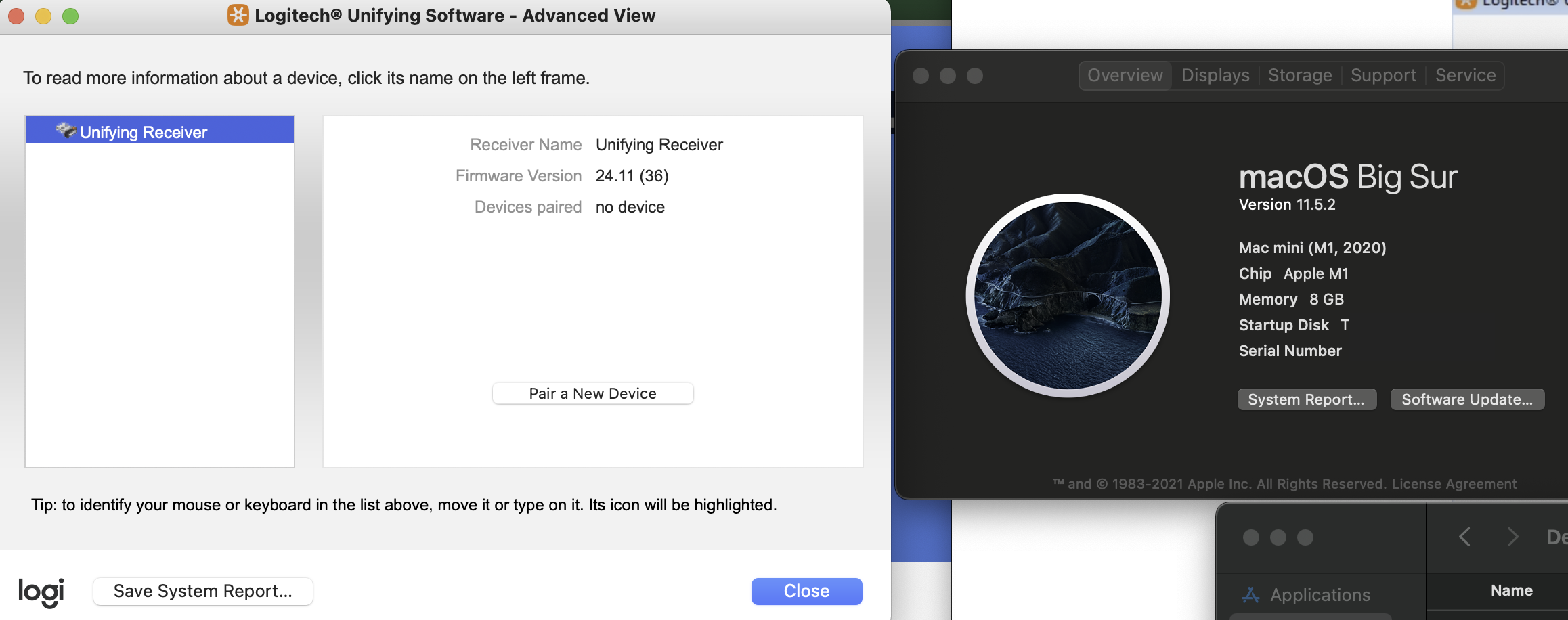
- #Logitech unifying software pc how to#
- #Logitech unifying software pc install#
- #Logitech unifying software pc drivers#
- #Logitech unifying software pc driver#
- #Logitech unifying software pc manual#
Solaar normally uses icon names for its icons, which in some system tray implementatations If some icons appear broken in the application, make sure you’ve properlyĬonfigured the Gtk theme and icon theme in your control panel. If the Python hid-parser package is not available Solaar will not recognize some devices.
#Logitech unifying software pc manual#
Manual installationįor the step-by-step procedure for manual installation. Solaar uses a standard system tray implementation solaar-gnome3 is no longer required for gnome or unity integration. a Mageia package, courtesy of David Geiger.a Gentoo package, courtesy of Carlos Silva and Tim Harder.Ubuntu/Kubuntu git build packages: use the Solaar git ppa, courtesy of gogo.Ubuntu/Kubuntu stable packages: use the Solaar stable ppa, courtesy of gogo.

#Logitech unifying software pc install#
Instead, upgrade to a recent version or manually install -window=only does not use the system tray, and starts with main window visible.įor more information on Solaar’s command-line interface use the help option,.-window=hide starts with its main window hidden,.-window=show (the default) starts with its main window visible,.Solaar’s GUI can be started in several ways For information on to set up a system tray under Gnome see This aspect of Solaar depends on having an active system tray, which is not the default Solaar’s GUI normally uses an icon in the system tray and starts with its main window visible.
#Logitech unifying software pc how to#
Solaar keeps track of most of these settings on a per-computer basis,īecause devices forget most settings when powered down,Īnd the GUI application restores them whenever a device connects.įor more information on how to use Solaar seeĪnd for more information on its capabilities see Such as scroll wheel direction and function key behavior. Solaar can also control some changeable settings of devices, Receivers as supported by the device and receiver. Solaar is able to pair and unpair devices with Show information about each device, often including battery status. To this end, it is useful to have Solaar start at user login so thatĬhanges made to devices by Solaar are applied at login and through out the user’s session.īoth Solaar interfaces are able to list the connected devices and Monitoring devices, making changes to them, and responding to some messages they emit. The Solaar GUI is meant to run continuously in the background, Solaar can be used as a GUI application, the usual case, or via its command-line interface.

#Logitech unifying software pc drivers#
Mouse movements or keycodes by Linux drivers or other software. It is thus unable to fix problems that arise from incorrect handling of
#Logitech unifying software pc driver#
Solaar is not a device driver and does not process normal input from devices. Solaar is thus only able to make the changes to devices that devices implement. That lets it directly communicate with the Logitech devices it manages using specialĮach Logitech device implements a different subset of these commands. Solaar runs as a regular user process, albeit with direct access to the Linux interface Using one of the methods described below. If you are using an old version and something described here does not work you should upgrade Some Linux distributions distribute old versions of Solaar. Solaar does not work with peripherals from other companies.ĭocumentation here is for the current version of Solaar. That connect wirelessly to a USB Unifying, Bolt, Lightspeed, or Nano receiver Ĭonnect directly via a USB cable or connect via Bluetooth. Solaar is a Linux manager for many Logitech keyboards, mice, and trackpads


 0 kommentar(er)
0 kommentar(er)
